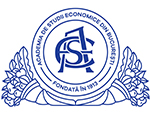
Octavian-Dragomir JORA
Academia de Studii Economice din Bucureşti
Framed as a bold move to reclaim economic sovereignty, President Trump’s “Liberation Day” tariffs signalled a dramatic shift in U.S. trade policy. Much more than a mere economic strategy, it featured as a symbolic act of national self-defence, implying that the United States needs bolder tariffs to compensate for the ridicule received from both its friends and foes. Some argue that countries running trade surpluses with the U.S. are exploiting it with predatory zeal, and that bringing back home industries sent overseas – by shortsighted past leadership – is essential for restoring the national might. Yet this narrative ignores a crucial fact: the American population is not made solely of xenophobic economic actors, but it includes, as well, consumers who are going to suffer from abrupt price increases, producers heavily wounded by the debris from broken supply chains. The social-economic fabric of both America and the rest of the world is far more subtle than blunt mercantilist segregations, for economic retaliation ends up inflicting collateral damage on the very people it aims to protect.
“ECONOMICS NEWSPEAK” DURING THE “LIBERATION DAY” [“NOUVORBE ECONOMICE” CU OCAZIA “ZILEI ELIBERĂRII”]

Mara Andreea TUDOR
University of Chicago
This study explores a novel behavioural externality in environmental economics: the relationship between social media usage and European residential water consumption. As digital self-presentation becomes an increasingly dominant social practice, particularly on visual-first platforms such as Instagram and TikTok, the concept of “performative hygiene” is proposed as a significant contributor to water overuse.
Keywords: social media, digital behaviour, Instagram, performative hygiene, water consumption, environmental externalities, residential resource use, behavioural economics
JEL: Q25, Q56, D12, L86, Z13
Showering for Instagram: Performative Hygiene and the Environmental Externalities of Social Media in Europe

Cătălin MURARAŞU
Academia de Studii Economice din Bucureşti
The research investigates the viability of developing offshore wind farms in the European Area of the Black Sea region. Moreover, the analysis highlights that renewable energy could be a strategic advantage for the developing Pontic states and potentially enhance their economic cooperation. The study conducts a comprehensive analysis of wind speed, direction, and consistency at eight sites.
Keywords: renewable energy, wind power, offshore, Black Sea, security, levelized cost of energy
JEL: O13, P18, P48, Q42
Offshore Renewable Energy in the Black Sea: Emerging Opportunities and Challenges

Ramona Iulia DIEACONESCU
Academia de Studii Economice din Bucureşti
Maria GHEORGHE (NIŢU)
Academia de Studii Economice din Bucureşti
The transition to a circular economy (CE) is critical for enhancing the supply resilience of critical raw materials (CRMs) within the European Union (EU). This paper examines the interconnectedness between critical raw materials, circular economy initiatives, and supply chain resilience in the EU. It explores the role of CRMs in supporting key economic sectors while addressing their supply vulnerabilities.
Keywords: world economy, divisions, globalization, risks, circular economy, critical raw materials, resilience, European Union
JEL: O13, P28, Q01, Q56
Circular Economy and Supply Resilience of Critical Raw Materials in the European Union

Sorin-Nicolae CURCĂ
Academia Română
This paper explores the topic of synergic effects arising from the establishment of a potential European Fiscal Union within the EU. The central idea of the study is that such a European Fiscal Union operates as a complex system (it comprises independent parts mutually interdependent), and its foundation, superseding the current EU fiscal framework, leads to new properties, i.e., synergy.
Keywords: colonialism, neocolonialism, postcolonialism, imperialism, synergy, emergence, European Fiscal Union, fiscal integration
JEL: E62, F15, F36, H77
Synergic Effects of a (Possible) European Fiscal Union

Revista ŒCONOMICA
From the pages penned by Richard Cantillon in the 18th century (Essay on the Nature of Trade in General), to the refined reflections of Israel M. Kirzner (Competition and Entrepreneurship) and the contemporary analyses of Gerald O’Driscoll and Mario Rizzo (The Economics of Time and Ignorance), these three volumes, recently translated into Romanian follow a topical common denominator.
Book Review: From Cantillon and Kirzner to O'Driscoll and Rizzo – the collection of the National Bank of Romania, from Curtea Veche Publishing House, offers a triple journey into the history of economic thought














